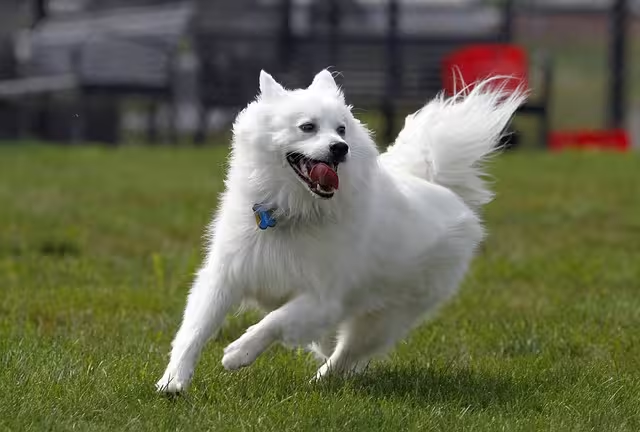Isospora belli is a parasitic organism primarily known for affecting humans, particularly those with weakened immune systems· However, many pet owners often wonder if their beloved dogs are at risk of contracting this parasite· This blog will explore the connection between dog breeds and coccidian infections, focusing on Isospora belli and similar species that can impact dogs· We will also discuss how breed characteristics, living conditions, and effective preventive measures can help safeguard our furry companions·
What Is Isospora Belli?
Isospora belli is a coccidian parasite that primarily infects the intestines of humans, leading to gastrointestinal issues such as diarrhea and abdominal pain· While Isospora belli itself is not typically found in pets, various dog breeds, including terriers, can be infected by closely related species, such as Isospora canis and Isospora ohioensis· These infections result in a condition known as coccidiosis, which is characterized by inflammation and damage to the intestinal lining· Recent studies have indicated that certain breeds may be more susceptible to these infections, making it crucial for pet owners to take mental notes on these potential risks to protect their pets’ health better.
The Life Cycle of Isospora
Understanding the life cycle of Isospora is crucial for preventing infections· The life cycle consists of two primary phases: the asexual and sexual phases· During the asexual phase, oocysts are shed in the feces of infected hosts· When ingested by a susceptible host, these oocysts release sporozoites that invade intestinal cells and multiply· Eventually, these cells burst, releasing new oocysts that can infect other hosts· In the world of dog breeds, knowing how this lifecycle operates can help pet owners take effective preventive actions, particularly for breeds that may be more susceptible to infections· Over the years, awareness of these risks has grown, emphasizing the importance of understanding the lifecycle of such parasites·
How Do Dogs Contract Coccidian Infections?
Dogs can contract coccidian infections through several pathways:
Fecal-Oral Transmission
The most common route is fecal-oral transmission, where dogs ingest oocysts from contaminated food, water, or surfaces· This is particularly prevalent in environments where multiple pets share spaces, such as kennels and dog parks· Owners should find ways to minimize exposure in these settings by thinking about hygiene practices· When meeting other pets, it’s essential to be aware of the surroundings and how they might look after playtime· Some dog breeds may be more prone to infections depending on their environment, making it crucial for owners to stay informed about the risks associated with their specific breeds·

Environments of Risk
Dogs that frequently visit kennels or dog parks face a higher risk due to close contact with other animals· High-density housing conditions provide an ideal environment for the spread of parasites· Furthermore, canines that are housed together in shelters may experience increased exposure to coccidian infections· Pet owners need to be cautious when they meet other canines in these settings, as some breeds may be more susceptible to infections· This is particularly true for breeds that are often called “social” canines, as their friendly nature can lead them to interact closely with others· Understanding how these interactions look and the risks involved can help owners take preventive measures·
Hygiene and Sanitation
Poor hygiene can lead to the accumulation of oocysts in the environment, heightening the likelihood of transmission· Therefore, maintaining a clean habitat is essential for preventing infections· Different dog breeds may have varying tolerances to unsanitary conditions, and how a dog looks can sometimes indicate its overall health· Ensuring that the areas where dogs are housed and cared for are clean is vital in protecting all breeds, especially those that are more susceptible due to their breeding history·
Immune Status
Young puppies and dogs with compromised immune systems are particularly vulnerable to infections· Their developing immune systems may not effectively fend off parasitic invaders, making regular veterinary check-ups critical for early detection and intervention· Small dog breeds, in particular, can be at a higher risk due to their size and the way they are bred, often resulting in unique health challenges· Additionally, the intelligence of these breeds can sometimes lead to behaviors that increase their exposure to parasites, making proactive health management even more important·
Breed-Specific Vulnerabilities
Certain dog breeds may be more susceptible to infections due to genetic predispositions or lifestyle factors· For example, breeds commonly found in shelters or rescues, such as Labrador Retrievers and Beagles, may exhibit higher infection rates due to their environment· The bond these dogs form with their owners is often strong, but their spirit and resilience can sometimes mask underlying health issues· The American Kennel Club (AKC) has noted that pets from high-density environments are more prone to various health problems, including parasitic infections, highlighting the importance of understanding the specific needs of each dog breed·
Popular Breeds
Popular dog breeds like the Golden Retriever and French Bulldog are recognized for their friendly nature and adaptability· However, they may also be prone to specific health issues, including those related to parasitic infections· Understanding the unique health concerns associated with each of these dog breeds can help owners take the necessary preventive steps to ensure their pets remain healthy and happy· By being aware of the potential risks, owners can better safeguard their furry companions against infections and other health problems·
Symptoms of Coccidiosis in Dogs
Recognizing the symptoms of coccidiosis is vital for ensuring prompt diagnosis and treatment· Common symptoms include:
Diarrhea
Diarrhea is often the first noticeable symptom and can range from watery to bloody· If left untreated, diarrhea can lead to dehydration, which can be life-threatening· Certain dog breeds may be more prone to gastrointestinal issues that cause these symptoms· Vomiting may also occur, as dogs can experience nausea, complicating hydration issues and leading to further health complications· Recognizing these signs early is crucial for all breeds, as timely intervention can significantly improve outcomes·

Weight Loss
A sudden decrease in appetite may result in noticeable weight loss, which is concerning for pet owners· Weight loss can also indicate other underlying health issues, and certain dog breeds may be more susceptible to conditions that affect their appetite· Owners need to monitor their pets closely and seek veterinary advice if they notice significant changes, as early intervention can help address potential health problems effectively·
Lethargy
Infected dogs may appear unusually tired or less active· This lethargy can be a sign of several health problems, making it essential to consult a veterinarian· Additionally, certain dog breeds may be more susceptible to infections that lead to such symptoms, so understanding the specific health risks associated with different breeds can help owners respond promptly and effectively to their pets’ needs·
Abdominal Pain
Some dogs may exhibit signs of discomfort, such as whining or reluctance to be touched in the abdominal area· This discomfort can indicate inflammation or other gastrointestinal issues· If you notice any of these symptoms in your dog, especially after exposure to a kennel or dog park, it is crucial to consult a veterinarian for a thorough diagnosis and appropriate treatment· Certain dog breeds may be more prone to gastrointestinal problems, making it even more important for owners to be vigilant about their pets’ health and seek professional advice when needed·
Diagnosis and Treatment of Coccidiosis
Diagnostic Procedures
Veterinarians typically diagnose coccidiosis through fecal examinations· A fecal flotation test allows the veterinarian to look for oocysts under a microscope· In some cases, additional tests may be required to rule out other gastrointestinal diseases, especially since certain dog breeds may be more prone to such conditions· Understanding these diagnostic procedures can help pet owners be proactive in seeking care for their pets·
Treatment Options
Once diagnosed, treatment options for coccidiosis generally include:
- Medication: Antiprotozoal medications, such as sulfadimethoxine, are commonly prescribed to eliminate the parasites· pet owners need to follow the veterinarian’s dosage instructions closely·
- Supportive Care: Ensuring that the dog stays hydrated and receives proper nutrition is crucial during recovery· In severe cases, hospitalization may be necessary for intravenous fluids and closer monitoring·
- Hygiene Practices: Improving hygiene at home and in kennels can help prevent reinfection· Routine cleaning of residential areas and prompt disposal of feces are vital components of this process·
Home Care and Monitoring
After treatment, it’s important to continue monitoring your dog for any signs of recurrence· Routine vet check-ups can help ensure that any infections are caught early, allowing for timely intervention·
Preventive Measures Against Coccidiosis
Preventing coccidiosis in pets involves several essential practices:
Routine Cleaning
Keep habitats clean and free of feces· Regularly disinfecting surfaces where canines eat and play is crucial to minimize the risk of infection, particularly for certain dog breeds that may be more susceptible to parasites· Maintaining a hygienic environment helps protect all pets and ensures their overall health and well-being·
Hygienic Feeding Practices
Ensure that food and water bowls are regularly cleaned· Contaminated food or water can serve as a source of infection, so maintaining hygiene is essential, especially for certain dog breeds that may be more vulnerable to illness· By prioritizing cleanliness, you can help protect your pets from potential health risks·
Socialization and Supervision
Be cautious when introducing your dog to new environments or other canines, especially in high-risk areas like dog parks or kennels· Certain dog breeds may be more susceptible to infections, so supervised interactions can help mitigate the risk of exposure to parasites· Taking these precautions ensures a safer experience for all pets involved·
Routine Veterinary Check-ups
Routine veterinary visits can help catch any potential issues early, including screening for parasites· Routine check-ups allow veterinarians to monitor your dog’s health and provide timely vaccinations, which is especially important for certain dog breeds that may have specific health concerns· Keeping up with these visits ensures your pet remains healthy and protected from various diseases·
The Role of the American Kennel Club in Dog Health
The AKC plays a vital role in promoting responsible dog breeding and ownership· They provide guidelines on breeding practices and health testing, which can help reduce the prevalence of genetic diseases and infections among various dog breeds· By adhering to these standards, breeders can contribute to the overall health and well-being of pets in their care·

Education and Resources
The Dog Breeders Association offers educational resources to help dog owners understand the specific needs of different dog breeds· From health screenings to vaccination schedules, being informed can help owners make better decisions for their pets, ensuring they receive the appropriate care tailored to their breed’s unique characteristics and requirements·
The Importance of Responsible Breeding
Responsible breeding practices can significantly impact a dog’s health· By choosing to adopt from reputable breeders who prioritize health testing, owners can help reduce the likelihood of inherited health problems among various dog breeds, including susceptibility to infections· This careful selection process contributes to a healthier future for all dogs, ensuring that they thrive in their environments·
Common Misconceptions About Coccidia and Dog Health
There are several misconceptions surrounding coccidia and their impact on pets:
- Only Stray Dogs Get Infected: While stray canines may be at higher risk due to their habitat, any dog can contract coccidia if exposed to contaminated environments·
- Coccidia Are Only Found in Dirty Environments: Even well-cared-for pets can contract coccidia if they come into contact with infected animals or contaminated areas· It is essential to maintain awareness of potential risks in various settings·
- Coccidia Are Harmless: Some pet owners believe that coccidia won’t harm their pets if they show no symptoms· However, even asymptomatic canines can shed oocysts and infect others, making it crucial to monitor all pets for any signs of illness·
Living with Coccidia: Guidelines for Pet Owners
If your dog is diagnosed with coccidiosis, following these guidelines can help prevent spreading the infection:
- Isolate Infected Dogs: Keep infected pets away from other pets until they have fully recovered· This helps prevent further transmission of the parasite·
- Thoroughly Clean Habitat Areas: Disinfect areas where the infected dog has been to eliminate any remaining oocysts· Use appropriate cleaning solutions that can effectively kill parasites·
- Monitor Other Pets: Pay close attention to other pets in the household for any signs of infection, as they may have been exposed to the same environment·
The Importance of Education for Dog Owners
Educating yourself about potential health risks, including parasitic infections, is crucial for responsible pet ownership· Understanding how to recognize symptoms, the importance of routine veterinary care, and the significance of hygiene can make all the difference in your pet’s health, especially when considering the specific needs of different dog breeds· Being informed empowers owners to take proactive steps in safeguarding their pets’ well-being·
Resources for Pet Owners
- Veterinary Clinics: Routine visits to your veterinarian will help you stay informed about your pet’s health, including vaccinations and preventive care·
- Online Communities: Joining online forums or social media groups dedicated to specific dog breeds can provide valuable insights and shared experiences from other pet owners· These platforms often share tips on health management and preventive care·
- Books and Articles: Many resources are available that focus on dog care, health, and breed-specific needs· These can be instrumental in deepening your understanding of dog health and wellness·
Conclusion
In conclusion, while Isospora belli primarily affects humans, pets can be susceptible to related coccidian infections· Understanding the risks associated with coccidia, especially in various dog breeds, can help pet owners take preventive measures to protect their furry friends· Regular veterinary care, proper hygiene, and awareness of breed-specific needs are essential for maintaining the health and well-being of dogs·
By staying informed and proactive, pet owners can ensure that their canines lead happy, healthy lives, free from the threat of parasitic infections like coccidiosis· Whether you own a well-liked breed or a rare breed, knowing potential health risks can make a significant difference in your pet’s overall quality of life·







